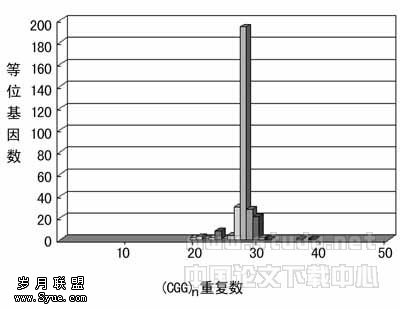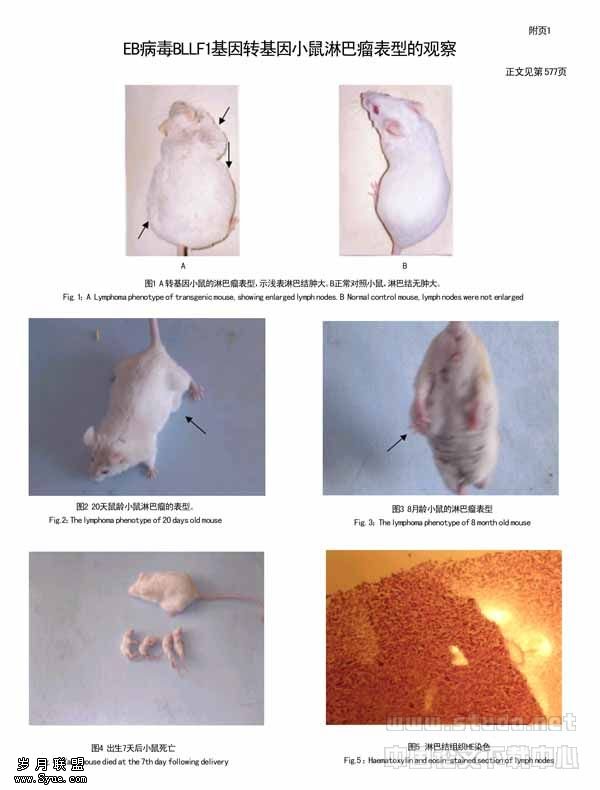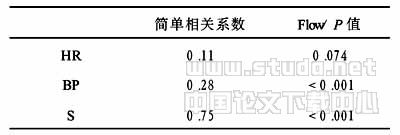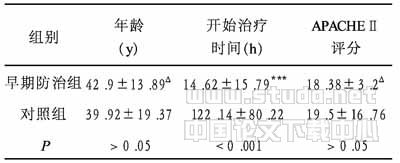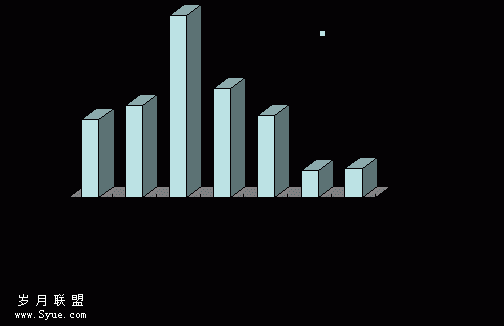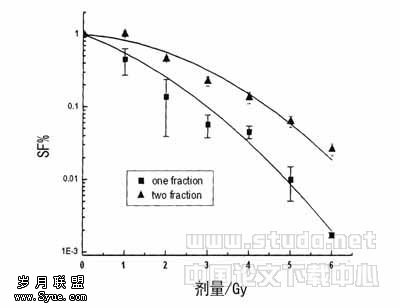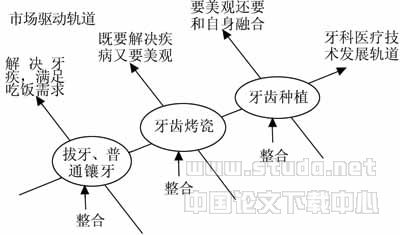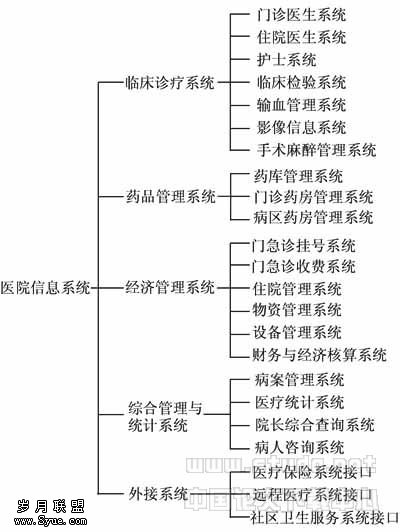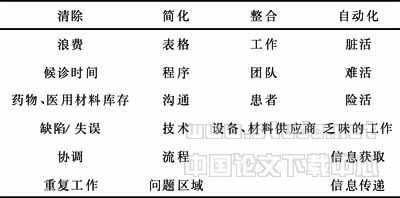大炎肽与乳腺肿瘤恶化的关系
作者:李发芳,吴昌明,陈正望
【摘要】 目的检测大炎肽在各类乳腺肿瘤组织中的分布,并验证它是否和乳腺肿瘤恶化相关。方法采用免疫组化辣根过氧化物酶染色检测。结果乳腺癌的阳性染色率为90%,良性肿瘤的阳性率为20.5%。和其他肿瘤相比,乳腺癌着色差异显著(P<0.005)。淋巴结转移癌中也有大炎肽分布。而良性组织中基本不表达。在乳腺癌样本中,大炎肽免疫着色强度随着组织增生、不典型增生和癌变的恶化而加深。结论大炎肽可能在乳腺肿瘤的恶化过程中起到了一定的作用。
【关键词】 乳腺肿瘤;大炎肽;免疫组化分析
Association of Daintain Disease Progression in Breast Carcinomas
Abstract:ObjectiveTo investigate the spatial distribution of a new bioactive intestine peptide daintain in different kinds of breast tumours. MethodsThe expression of daintain in 66 cases was evaluated by immunohistochemistry analysis. ResultsIt has been found that there were significantly higher positive rate(90%) in breast cancer cases( P<0.005), the positive rate in benign tumours is only 20.5%. In addition, positive staining of daintain in lymphatic metastasis was clearly testified. No staining or weak staining was seen in benign tissues. Interestingly, the distribution of daintain among benign cells, hyperplasia tissues, immature hyperplasia and invasive breast cancer was distinct, and it presented the progression to the development of malignant lesion. ConclusionThe fact mentioned above indicates that daintain is closely associated with disease progression in breast carcinomas.
Key words:Breast tumor; Daintain; Immunohistochemistry
0引言
乳腺癌是女性中最常见的恶性肿瘤,占女性患者恶性肿瘤的四分之一。近年来,该病的发病率在明显上升,美国和北欧的发病率高达十万分之七十至九十。寻找乳腺癌的早期诊断分子标记及其组合迫在眉睫。目前,已经发现有许多免疫组化标记物在乳腺癌中有不同程度的表达。它们主要是表皮膜抗原(EMA)、表皮生长因子受体(EGFR)、生长因子Her2/neu(c?erbB?2)、雌激素受体(ER)、孕激素受体(PR)、核增殖抗原(PCNA、Ki?67)等。这些标记分别在肿瘤早期诊断、监测和预后方面起到了一定的作用。进一步研究、开发导致乳腺肿瘤恶化分子标识物及其诊断、治疗最佳组合将为乳腺癌患者带来希望。Daintain是从猪肠中纯化、含146个氨基酸的活性肽 [1],与Utans等 [2,3]鉴定来自老鼠脊髓和人的AIF?1蛋白高度相似。因此命名为Daintain/AIF?1。该基因定位在人类MHC区域,编码蛋白参与自身免疫和炎症反应 [4?6]。Daintain/AIF?1分布在肠粘膜固有层、肝巨噬细胞、中枢神经系统和淋巴等免疫器官,可能是上述器官中的一种强抗原性标记物,因此称之为大炎肽。大炎肽不仅和炎症反应相关,而且参与细胞介导的自身免疫反应 [7]。实验证明,它存在于老鼠和人类肿瘤的活化细胞中 [8]。AIF?1在血管增生疾病中的作用机制可能是它缩短了细胞周期 [9]。而血管增生及其相关因子已经确定为乳腺癌标记 [10,11]。AIF?1能聚合F肌动蛋白并调节Rac1的活性 [12],而肌动蛋白和Rac1与促进肿瘤活动和浸润的RhoC GTP酶高度相关[13,14]。因此,我们用免疫组织化学方法研究大炎肽与乳腺肿瘤恶化的关系。
1资料与方法
1.1病理标本研究组织取自湖北省肿瘤病理科2004年乳腺疾病患者手术切除标本。共66例,其中,乳腺癌30例(导管浸润癌23例、小叶浸润癌4例、非典型髓样癌1例、乳头状癌1例、淋巴结转移性恶性肿瘤1例);导管内乳头状瘤11例;纤维腺瘤11例;慢性乳腺增生病10例以及4例脂肪瘤。采用PBS和非免疫血清作大炎肽多克隆抗体阴性对照。
1.2免疫组化分析所有组织用10%中性福尔马林固定、常规石蜡包埋。连续切片3张,片厚4μm。置37℃烘干后分别进行HE和大炎肽免疫染色。免疫组织化学技术参见韦淑琴等[15] 。抗原修复时间和抗体稀释浓度在大批实验前进行了摸索。二甲苯脱蜡、分级酒精复水;加3% H2O 2,搁置室温10 min;将枸橼酸煮开,微波修复10 min;加1%白蛋白,室温孵育20 min;滴加0.23μg/μl一抗,37℃孵育2 h;滴加羊抗兔HRP,室温20 min。每一步骤(除添加白蛋白一步之外)完成后都用PBS洗3遍,擦干波片。DAB染色,苏木素复染,冲洗后依次酒精逐级脱水、二甲苯透明、中性树胶封片。
1.3判断标准根据切片中daintain免疫组化染色不同分为3种即强阳性、阳性和阴性。强阳性为棕黄色或棕褐色(++);阳性黄色(+);组织不着色或着淡黄色为阴性(-)。染色结果由两位病理专家诊断,结果一致的才用于统计分析。
2结果
大炎肽在乳腺肿瘤或增生病中的免疫染色结果见表1。乳腺癌组织中,6例强阳性,20例阳性, 2例表现阴性,2例部分区域表现阳性、部分表现阴性,和组织分化程度有关。其阳性染色率为90%。根据同样的诊断、统计方法,乳突状瘤的阳性率为42%,纤维腺瘤阳性着色率为25%,乳腺增生组织的阳性率为15%,脂肪瘤全部表现阴性。乳腺癌的阳性表达率与其他各乳腺组相比,差异显著(P<0.005)。同一切片的不同视野中,daintain染色结果和组织学分化程度有关。
对大炎肽免疫染色结果进行统计发现,30例导管浸润癌中28例呈现阳性染色,而非免疫血清、PBS和正常导管的对照中不染色,见图 1。
图1a和图1b对比了同一视野中乳腺癌中大炎肽免疫染色和HE染色效果,其中可以发现,HE染色为癌的,在免疫染色中都着上了黄色,如图中箭头所示。图1c是抗体稀释液阴性对照,无着色。对大多病例来说,大炎肽免疫染色不但能更明显地反映癌组织的形态学特征,还能直接通过颜色辨别癌组织。图2表明,从良性组织、增生组织、重度不典型增生组织、癌组织到淋巴结转移癌的恶化过程中,大炎肽免疫着色逐渐加深。(略)
表15种乳腺疾病组织中的大炎肽免疫染色(例数)(略)
3讨论
乳腺癌的分子标志物一直以来都受到了研究者高度关注,特别是肿瘤血管和血管生成相关因子,它们被认为是重要的独立诊断和预后因子[16,17]。这些标志物不仅存在于生长、扩散肿瘤的活化细胞中,而且在其他宿主活化细胞中也有。 据报道,成熟肌肉通过肌原卫星细胞激活而再生[18],巨噬细胞能促进卫星细胞的再生而阻滞它的分化[19],Daintain/AIF?1能根据剂量多少调节核增殖抗原相关蛋白如肌浆蛋白和钙调素?钙粘蛋白,从而影响卫星细胞的增殖和分化[20]。Autieri等[21]2000年报道, 活化的血管平滑肌(VSMC)中 AIF?1 过量表达会增强血管的再生能力。Francis等[22] 同年对这一观点提出了质疑,认为AIF?1 过量表达和血管再生的因果关系并不那么确定。为此,Autieri 分别在2001年和2003年发表研究证明,AIF?1确实能促进血管再生和转移[8,12]。1972年Folkman等[23]在导致肿瘤转移的血管再生模型中强调,增生、不典型增生、血管再生和微血管浸润对肿瘤转移起着决定性的作用。 本研究结果中,daintain/AIF?1出现在乳腺增生组织、重度不典型增生、乳腺癌组织和转移淋巴癌组织中,而在正常组织中不表达。RT?PCR 分析同样在乳腺癌组织中检测到了大炎肽的mRNA,而正常乳腺组织中没有检测到 (本实验室资料,尚未发表)。因此,我们认为和其他肿瘤血管再生相关因子一样[24],大炎肽在乳腺癌的发生和过程中扮演了一定的角色。本次实验中,病理医生通过形态学不易判断的病理类型经大炎肽免疫染色后大面积呈黄色。结合几个病理医生的意见,该病例最后判为中度不典型增生。在大量的实验研究中,大炎肽免疫染色提供了便捷的病理判断途径。大炎肽要想作为乳腺癌病理诊断标记,还需进一步扩大试验样本数量,并调查健康及乳腺癌病人血液中该肽的含量,以此作为临床病理诊断数据。建议进一步制备出大炎肽的单克隆抗体,用更多的病例进行分析,以期鉴定大炎肽能否作为乳腺癌早期诊断的一个广谱标识物。
【】
[1]Chen ZW, Ahren B, Ostenson CG, et al. Identification, isolation, and characterization of daintain (allograft inflammatory factor 1), a macrophage polypeptide with effects on insulin secretion and abundantly present in the pancreas of prediabetic BB rats[J]. Proc Natl Acad Sci, 1997, 94(25):13879?13884.
[2]Utans U, Arceci RJ, Yamashita Y, et al. Cloning and characterization of allograft inflammatory factor?1: a novel macrophage factor identified in rat cardiac allograft with chronic rejection[J]. J Clin Invest, 1995, 6(6):2954?2962.
[3]Utans U, Quist WC, McManus BM, et al. Allograft inflammatory factory?1. A cytokine?responsive macrophage molecule expressed in transplanted human hearts[J]. Transplantation, 1996, 61 (9):1387?1392.
[4]Watano K, Iwabuchi K, Fujii S, et al. Allograft inflammatory factor?1 augments production of interleukin?6, ?10 and ?12 by a mouse macrophage line[J]. Immunology, 2001, 104(3):307?316.
[5]Neville MJ, Campbell RD. A New Member of the Ig Superfamily and a V?ATPase G Subunit Are Among the Predicted Products of Novel Genes Close to the TNF Locus in the Human MHC[J]. The Journal of Immunology, 1999, 162(8): 4745?4754.
[6]Pashenkov M, Efendic S, Zhu J, et al. Augmented expression of daintain/allograft inflammatory factor?1 is associated with clinical disease: dynamics of daintain/allograft inflammatory factor?1 expression in spleen, peripheral nerves and sera during experimental autoimmune neuritis[J]. Scandinavian Journal of Immunology, 2000, 52 (2): 117.
[7]Schluesener HJ, Seid K, Kretzschmar J,et al. Allograft?inflammatory factor?1 in rat experimental autoimmune encephalomyelitis, neuritis, and uveitis: expression by activated macrophages and microglial cells[J]. Glia, 1998, 24(2):244?251.
[8]Deininger MH, Seid K, Engel S, et al. Allograft inflammatory factor?1 defines a distinct subset of infiltrating macrophages/microglial cells in rat and human gliomas[J]. Acta Neuropathol (Berl), 2000, 100(6):673?680.
[9]Autieri MV, Christopher M. Overexpression of Allograft Inflammatory Factor?1 Promotes Proliferation of Vascular Smooth Muscle Cells by Cell Cycle Deregulation[J]. Arteriosclerosis, Thrombosis, and Vascular Biology, 2001, 21(9):1421.
[10]De Jong JS, van Diest PJ, Baak JPA. Hot spot microvessel density and the mitotic activity index are strong additional prognostic indicators in invasive breast cancer[J]. Histopathology, 2000, 36 (4):306?312.
[11]Weidner N, Folkman J, Pozza F, et al. Tumor angiogenesis: a new significant and independent prognostic indicator in early?stage breast carcinoma[J]. Journal of The National Cancer Institute, 1992,84 (24): 1875?1887.
[12]Autieri MV, Kelemen SE, et al. AIF?1 Is an Actin?Polymerizing and Rac1?Activating Protein That Promotes Vascular Smooth Muscle Cell Migration[J]. Circulation Research, 2003, 92 (10):1107.
[13]Hall A. Rho GTPases and the actin cytoskeleton. Science, 1998, 279 (5350):509?514.
[14]Suwa H, Ohshio G, Imamura T, et al. Overexpression of the RhoC gene correlates with progression of ductal adenocarcinoma of the pancreas[J]. Br J Cancer, 1998, 77 (1):147?152.
[15]韦淑琴,隋丽华,戚基萍,等. ERK1/2和cyclinD1蛋白在卵巢上皮性肿瘤组织中的表达及其意义[J].肿瘤防治研究,2004,(02):31?33.
[16]Weidner N. New Paradigm for Vessel Intravasation by Tumor Cells[J]. American Journal of Pathology, 2002, 160 (6):1937?1939.
[17]van Dijke CF, Brasch RC, Roberts TP, et al. Mammary carcinoma model: correlation of macromolecular contrast? enhanced MR imaging characterizations of tumor microvasculature and histologic capillary density[J]. Radiology, 1996, 198 (3): 813?818.
[18]Richard I, Sherwood, Julie L, et al. Isolation of Adult Mouse Myogenic Progenitors Functional Heterogeneity of Cells within and Engrafting Skeletal Muscle[J]. Cell, 2004, 119(4): 543?554.
[19]Merly F, Lescaudron L, Rouaud T, Macrophages enhance muscle satellite cell proliferation and delay their differentiation[J]. Muscle Nerve, 1999, 22(6):724?732.
[20]Kuschel R, Deininger MH, Meyermann R, et al. Allograft inflammatory factor?1 is expressed by macrophages in injured skeletal muscle and abrogates proliferation and differentiation of satellite cells[J]. J Neuropathol Exp Neurol, 2000, 59(4):323?332.
[21]Autieri MV, Carbone C, Mu A. Expression of allograft inflammatory factor?1 (AIF1) is a marker of activated human VSMC and arterial injury[J]. Arterioscler Thromb Vasc Biol, 2000, 20(7):1737?1744.
[22]Francis J,Miller Jr. AIF?1 in the Activated Smooth Muscle Cell?Spectator or Participant?[J]. Arteriosclerosis, Thrombosis, and Vascular Biology, 2000, 20 (7):1701.
[23]Holleb AI, Folkman J. Tumor angiogenesis[J]. CA Cancer J Clin, 1972, 22 (4): 226 ? 229.
[24]Folkman J, Merler E, Abernathy C, et al. Isosation of a Tumor Factor Responsible for Angiogensis[J]. The Journal of Experimental Medicine, 1971, 133 (2): 275?288.


